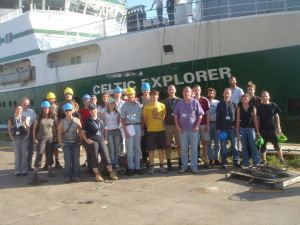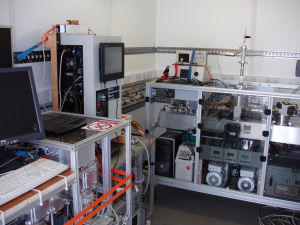MAP (Marine Aerosol Production): Primary & Secondary Marine Aerosol Production from Natural Sources

Introduction
Marine aerosol contributes significantly to the global radiative budget and consequently, changes in marine aerosol abundance and/or chemical composition will impact on climate change. Various climate feedback mechanisms have been proposed involving the sulphur, sea-salt, iodine and organic sea-spray cycles; however, all cycles and their impacts on aerosol haze and cloud layers remains poorly quantified. MAP will consolidate the current state-of-the-art in the fields of aerosol nucleation and growth and primary marine aerosol (PMA) production to quantify the key processes associated with primary and secondary marine aerosol (SMA) production from natural sources.
MAP will focus on the newly identified aerosol formation mechanisms involving iodine oxides, for secondary aerosol production, and the primary production of marine organic matter aerosols produced by plankton and transferred to the atmosphere via the bubble bursting process at the ocean surface. Key processes will be identified, parameterized and implemented in a Global/Regional scale chemical transport model and in a regional climate model.
Combining the knowledge gathered on key processes with satellite-derived information on oceanic and meteorological parameters, an algorithm will be developed to produce a Sea-Spray Source Function (S3F) which will subsequently be used in large scale models to quantify the impacts of marine aerosols. The algorithm and its application will be proposed as a service contributing to GMES/GEOSS. Similarly, an organo-iodine source function will also be developed. The impact of marine aerosol on atmospheric chemistry, radiative forcing and climate will be evaluated using the large-scale models.
Objectives
(1) To elucidate the dominant condensable vapours driving secondary marine aerosol (SMA) formation.
(2) To quantify the number and size flux of primary inorganic and organic marine sea-spray aerosol (PMA)
(3) To produce a PMA and iodo-carbon source function using integrated Global Earth Observing satellite data and in-situ data.
(4) To quantify the impact of SMA and PMA on radiative forcing and atmospheric chemistry.
Project Details and Further Information

Measurements for the MAP project took place at Mace Head, Galway, Ireland during January 2006 and on board the RV Celtic Explorer in the North Atlantic off the Irish coast during June and July 2006. The Centre for Atmospheric Science provided aerosol measurements during both these campaigns deploying the AMS in January and the sea container with a full suite of instruments on board the Celtic Explorer.
The MAP project was a European Union integrated project involving 16 different institutions and is funded under EU Framework Programme 6.
Further information can be found on the MAP project website.